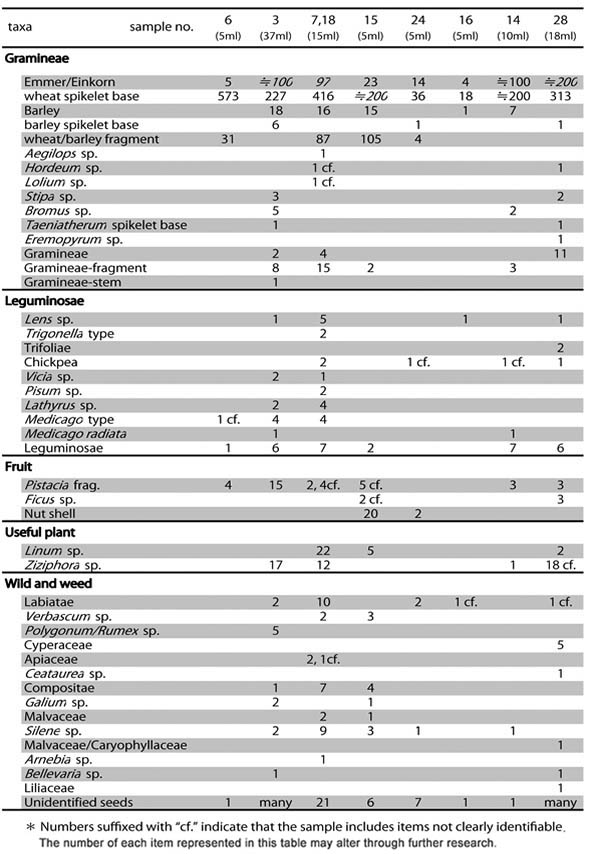Charred botanical remains were recovered from flotation samples. The analysis is still in progress and only the items recovered from eight samples from different contexts are included here. About 100ml of charred remains were submitted for microscopic observations for the identification of taxa.
Wheat grain and its spikelet base were predominant. The density of spikelet base within each sample varied from 3.6 to 114.6 fragments per ml of all charred remains and demonstrated significant diversity in their spatial distribution. Emmer was the most dominant taxon. Some einkorn, which was morphologically similar to emmer especially when its size was large, may also have been included.
Barley was the second dominant taxon although the quantity was one tenth of that of wheat. Both grain and spikelet base were present with the former more common. The domestic/wild status of wheat and barley is usually distinguished based on scars on spikelet bases and its identification is currently in progress for the samples from Salat Camii Yanı.
Pulses contained lentils (Lens sp.), grass peas (Lathyrus sp.) and probably chick pea (Cicer sp.) and pea (Pisum sp.). Other edible plants identified were pistachio (Pistacia sp.) and linseed/flax (Linum sp.). Some Ziziphora sp. (Lamiaceae) and Stipa sp.(Gramineae) were also included. Weed taxa such as Bromus sp. (Gramineae), Medicago sp. (Leguminosae), Verbascum sp. (Scrophulariaceae), Compositae species, Galium sp. (Rubiaceae), Caryophyllaceae and Malvaceae were present. They were probably growing around residential areas or within crop fields and carried to the site in animal dung used as fuel.
Anthracological analysis of nine wood charcoal, which were probably used for fuel obtained near the settlement, enables us to reconstruct the past vegetation around the settlement. Seven ash (Fraxinus sp.), one poplar (Populus sp.) or willow (Salix sp.), and one reed (Fragmites sp.) were identified. These trees usually grow along river lines and thus the presence of these wood charcoal suggests that the inhabitants of Salat Cami Yanı utilized plant resources available along the Salat River flowing by the site.
Number of identified taxa from eight samples collected in 2008.

